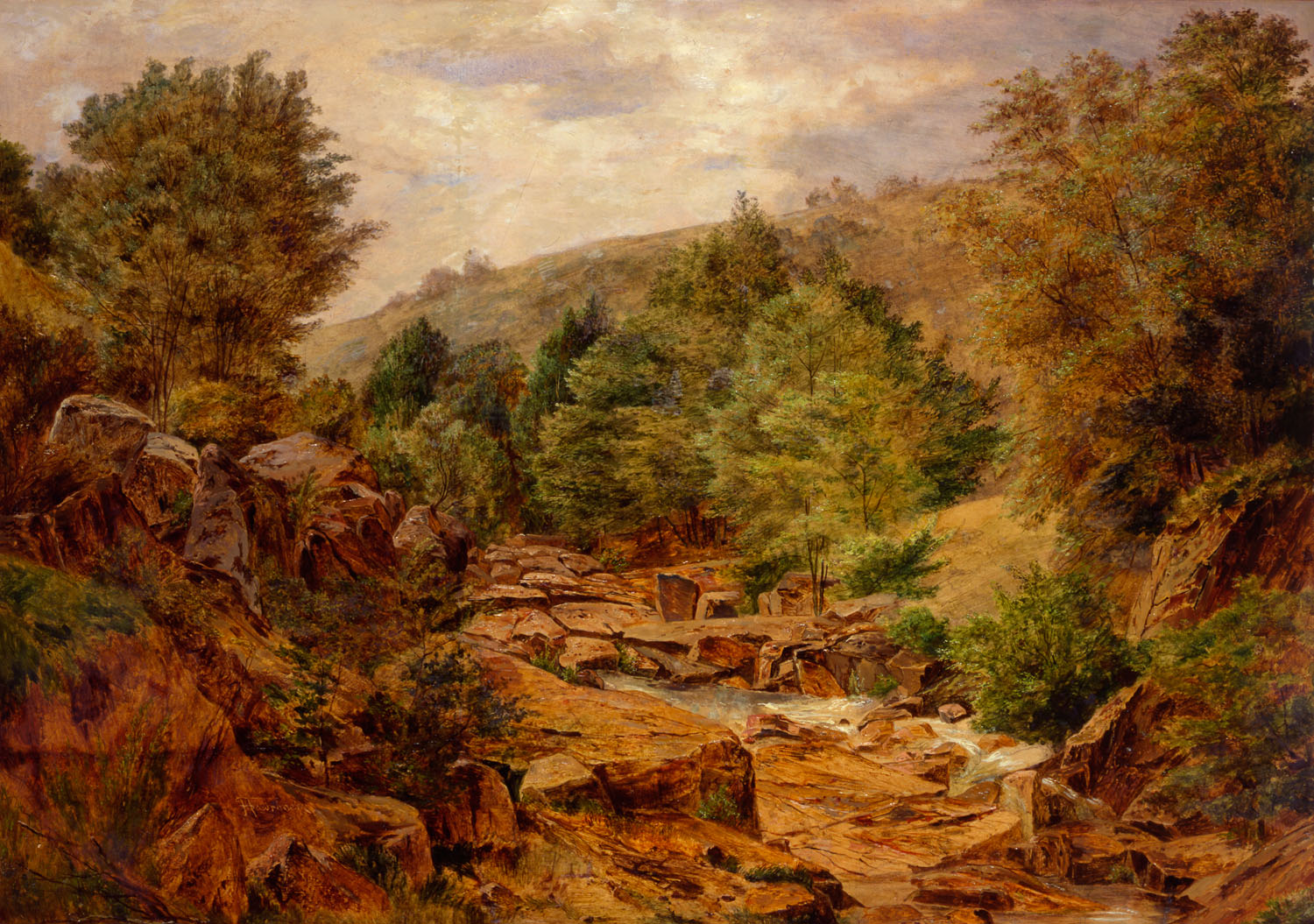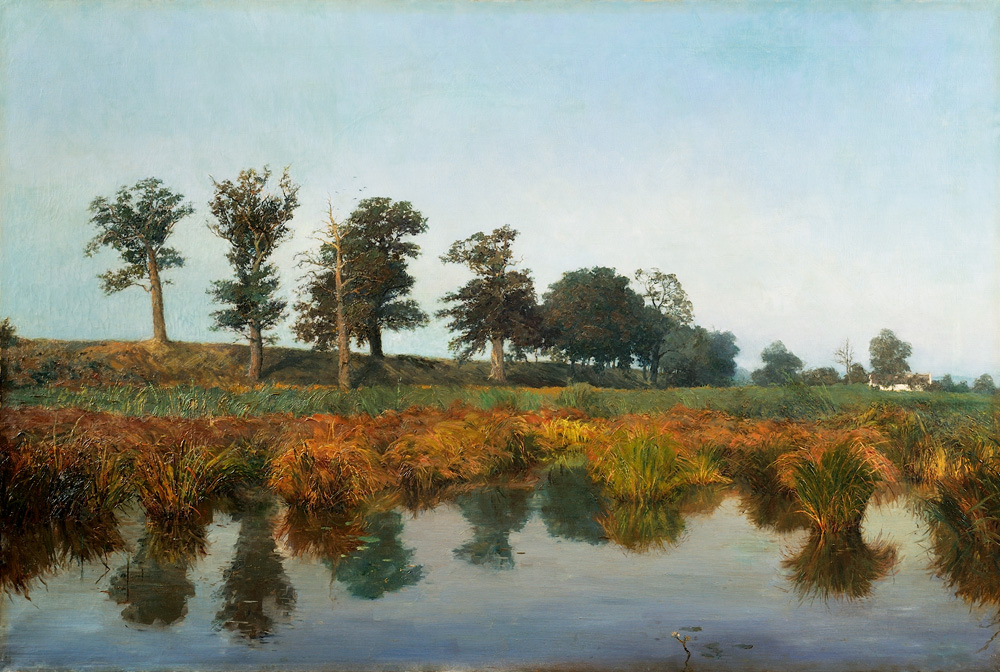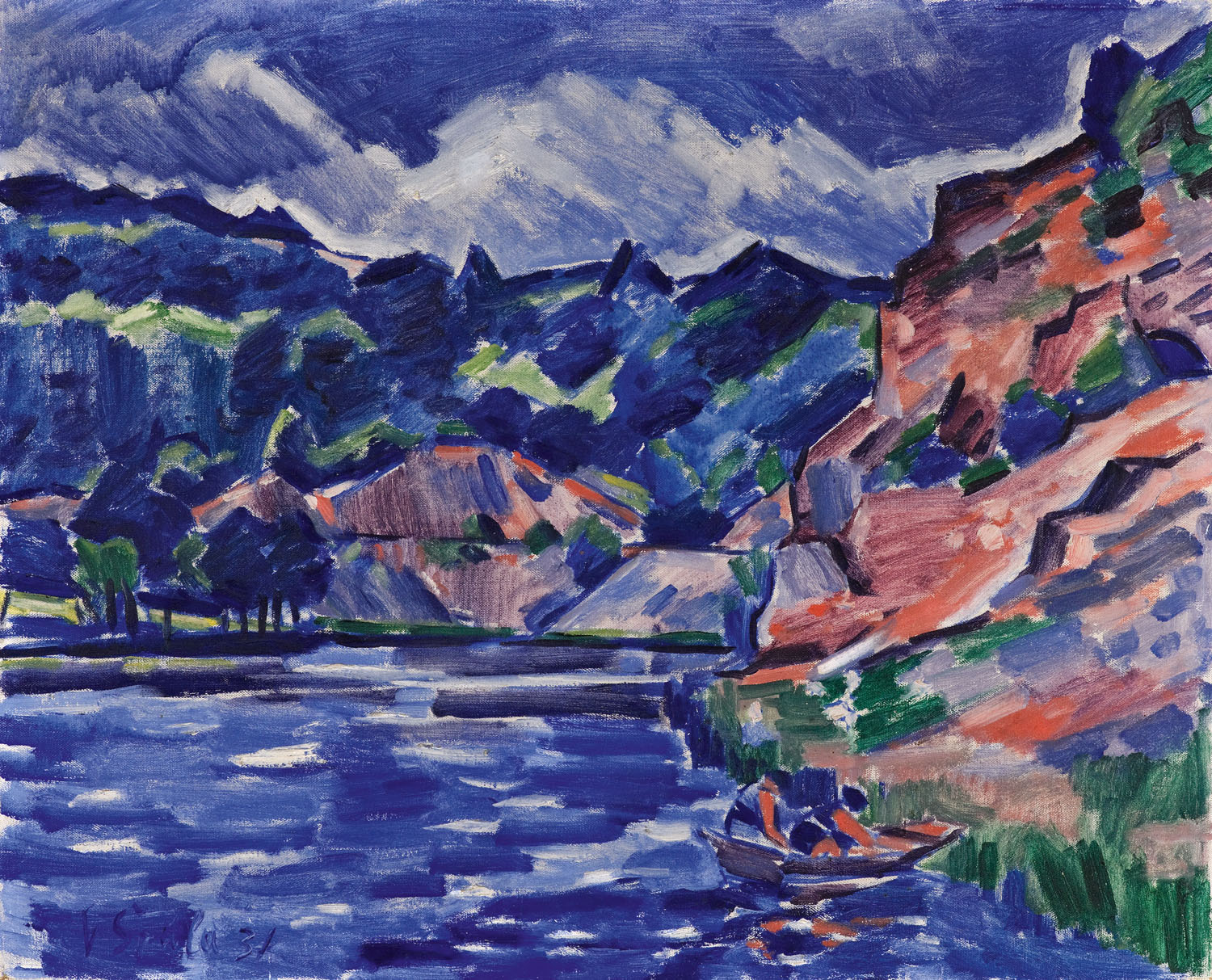Dear art lovers, the exhibition MY COUNTRY – A TRIBUTE TO CZECH LANDSCAPE PAINTING is being held from September 4 to November 1 at the Prague Castle Riding School and the Diamant Gallery of the Mánes Union of Fine Arts in Lazarská Street in Prague.
This is the first time in over 30 years that an exhibition of this scope and quality has been held, and it includes paintings from the Prague Castle collection that have hereto never been presented to the public. You will see the most beautiful works of our landscape painters, both from public and private collections, created from the 19th century to the present day.
THE ORGANIZERS OF THIS EXHIBITION ARE PRAGUE CASTLE ADMINISTRATION AND THE MÁNES UNION OF FINE ARTS.
From the very beginning, the Mánes Union of Fine Arts has brought together painters, sculptors, architects, glassmakers, and art historians and has become a part of the cultural and social life of our country. At the same time, throughout its entire history, it has always insisted on quality and proven values. Its social and artistic authority helped build an independent nation; its patriotism (following in the legacy of Josef Mánes) and affiliation with the beliefs of the first President of Czechoslovakia, Tomáš Masaryk, were responsible for European artistic values coming to our lands, for opening the doors to Europe.
Therefore, the majority of the works exhibited in MY HOMELAND – A TRIBUTE TO CZECH LANDSCAPE PAINTING are by Mánes members. The attentive observer will understand that for the last 125 years, the history of our culture and fine arts is so closely entwined with the Mánes Union of Fine Arts that the following can be declared: The Mánes Union of Fine Arts is an inseparable phenomenon of Czech culture and art. When we say Mánes, we mean art. When we speak of the best artists this nation has produced, we are speaking of Mánes artists.

The artists
Judge for yourselves: Josef Mánes – the Union's patron, Mikoláš Aleš – the Union's first president, Stanislav Sucharda, Jaroslav Špillar, Jan Minařík, Hanuš Schwaiger, Josef Schusser, Arnošt Hoffbauer, Jan Preisler, František Kupka, Zdenka Braunerová, Ferdinand Engelmüller, Alois Kalvoda, Ladislav Šaloun, Josef Ullmann, Herbert Masaryk, Miloš Jiránek, Antonín Slavíček, Antonín Hudeček, Stanislav Lolek, Jaroslav Panuška, František Kaván, Josef Uprka, Ludvík Kuba, Roman Havelka, Hugo Boettinger, Josef Holub, Jan Honsa, Bohumír Jaroněk, František Bílek, Oldřich Blažíček, Jindřich Prucha, Václav Radimský, Willi Nowak, Otakar Nejedlý, Otakar Kubín, Josef Mařatka, Josef Hubáček, Josef Lada, Vojtěch Preissig, Jan Kotěra, Josef Gočár, Otakar Novotný, Pavel Janák, Josip Plečnik, Dušan Jurkovič, Josef Svoboda, Vlastimil Hoffmann, Jaroslav Fragner, Vratislav Nechleba, Josef Chochol, Jan Štursa, Otto Gutfreund, Jan Kodet, Jan Lauda, Bohumil Kafka, Otakar Španiel, Bedřich Stefan, Vincenc Makovský, Bohumil Kubišta, Jan Zrzavý, Emil Filla, Václav Špála, Antonín Procházka, Josef Čapek, Vincenc Beneš, Alfred Justitz, František Kysela, Max Švabinský, Bořivoj Žufan, Alois Wachsman, Bedřich Piskač, Adolf Hoffmeister, Viktor Stretti, František Muzika, Rudolf Kremlička, Oldřich Koníček, Karel Holan, Jan Slavíček, Miloslav Holý, Jaroslav Grus, Josef Šíma, František Šimon, Jindřich Štyrský, Toyen, Jan Trampota, Jiří Trnka, Zdeněk Sklenář, Václav Rabas, Vlastimil Rada, Vojtěch Tittelbach, Adolf Zábranský, Vladimír Sychra, Karel Svolinský, Jan Bauch, Břetislav Benda, Josef Liesler, Arnošt Paderlík, Václav Hejna, František Jiroudek, Josef Istler, Ota Janeček, František Ronovský, Josef Jíra, Otakar Kuča, Emil Cimbura, Josef Klimeš, Stanislav Hanzík, Jiří Kaloč, and many more.

Structure of the exhibition
The landscape atelier was established in the year 1806 at the Prague Academy of Visual Arts, and, for more than 200 years now, hundreds of artists have devoted themselves to landscape painting. It is, therefore, understandable that this exhibition is being held in two locations – the Prague Castle Riding School and the Mánes Union's Diamant Gallery. Space limitations did, after all, restrict the selection of artists and works. We have chosen the most essential and value tested of them in order to emphasize the legacy of our great artists.
The oldest period of ideal landscapes of classicism and romanticism in the first section are represented by names such as Postl, Piepenhagen, and Navrátil. Special attention is given to the artistic family Mánes.
The second section represents the Haushofer school (Kosárek, Bubák, Havránek, Mařák, and others).
The third section is an intermezzo, in which the advent of realism and foreign influences is illustrated (Chittussi, Aleš, Brožík, and others).
The fourth section is the golden age of landscape painting and represents the Mařák school and other realist and impressionist landscape painters of the period around 1900 (Slavíček, Kaván, Lebeda, Kalvoda, Radimský, Blažíček), who form the most essential connection to the variations of the landscape painting of the 20th century and are the authors of some of the most beautiful landscapes outright.
The fifth section is entitled "The Landscape of the Soul" and takes the observer to the dreamy fairytale landscapes of symbolism and art nouveau (Hudeček, Preisler, Rašek, Orlik).
The sixth section represents the Mánes union in its beginnings, when the avant-garde tendencies that came after 1900 broke landscape techniques up into multiple forms. Slavíček, Hudeček, Preisler, Švabinský, and Jiránek continued in the work they had begun, associated within the Mánes Union, which for more than a half century set the course for growth in our art and in our society. At the same time, several distinctive movements developed, particularly expressionism. Not only under the influence of an exhibition of Edvard Munch in 1905 did theretofore unseen landscapes begin appearing in Prague. Their authors were Filla, Beneš, Nowak, Kubín, and others, later brought together within the Osma group. A significant contribution to the landscape atelier was made by Prucha and Kubišta, who influenced several generations to come.
The seventh section shows landscape painters of the traditional realistic treatment, such as Nejedlý, Trampota, and Rabas, in context with the distinctive solitaires of the Tvrdošíjní group (Špála, Zrzavý, Marvánek, Kremlička, Čapek).
The eighth section is an intermezzo of pictures that were painted during journeys abroad, namely in the Mediterranean and France, which had a big impact on future landscape tendencies (Kubín, the Nejedlý school).
The ninth section is entitled "The Magic of Dreams" and comprises imaginative and surrealistic landscapes of unbounded fantasy (Šíma, Toyen, Štyrský, Janoušek).
The tenth section represents the poetics of the Devětsil group, civilism, and the cityscape (Hoffmeister, Mrkvička, Lhoták, Holý).
The eleventh section presents the diverse pictures of the solitaires and schools that were coming into their own after the Second World War (Lada, Trnka, John, Jiroudek, Jíra).
In the twelfth section of landscape dialogues, we offer a comparison between the old masters and our contemporary painters (Kaloč, Exner).
The final thirteenth section of drawings, graphic techniques, and watercolors located in the hallway of the Riding School comprises nearly a hundred works (Mánes, Mařák, Čepelák).

The galleries
This is merely a brief summary of what the exhibition has to offer. The installation at the Prague Castle Riding School features over 550 pictures and 80 drawings, and over 120 works are on display at the Diamant Gallery. We dare say that in terms of the scope and quality of the represented works, this exhibition is unique and will likely remain unparalleled for decades. The exhibition is accompanied by a color publication featuring all the works and exhibition catalogue.
Those who ask the questions Who am I? Where have I come from? Where am I going? seek answers. They know their country's past and their ancestors and they are aware of their relationship to their homeland. In today's world, in the global world free of borders and free of boundaries, the word homeland becomes polemical and invites discussion. Homeland is a synonym for landscape, and the landscape is a quiet witness to our history. It is a place we hold both in our hearts and in the land beneath our feet. These are the most important reasons that have driven us in organizing this monumental exhibition of the work of the Czech landscape artists. We hope that visitors will appreciate and remember for decades to come the beauty of our homeland as depicted by our greatest artists.
Prague Castle Riding School
U Prašného mostu 3, 110 00 Praha 1
Open daily 10 a.m. to 6 p.m.
Diamant Gallery
Spálená 82/4 (on the corner of Rettigová and Lazarská)
110 00 Prague 1 – New Town
open: Tuesday-Sunday 12 a.m. to 6 p.m.